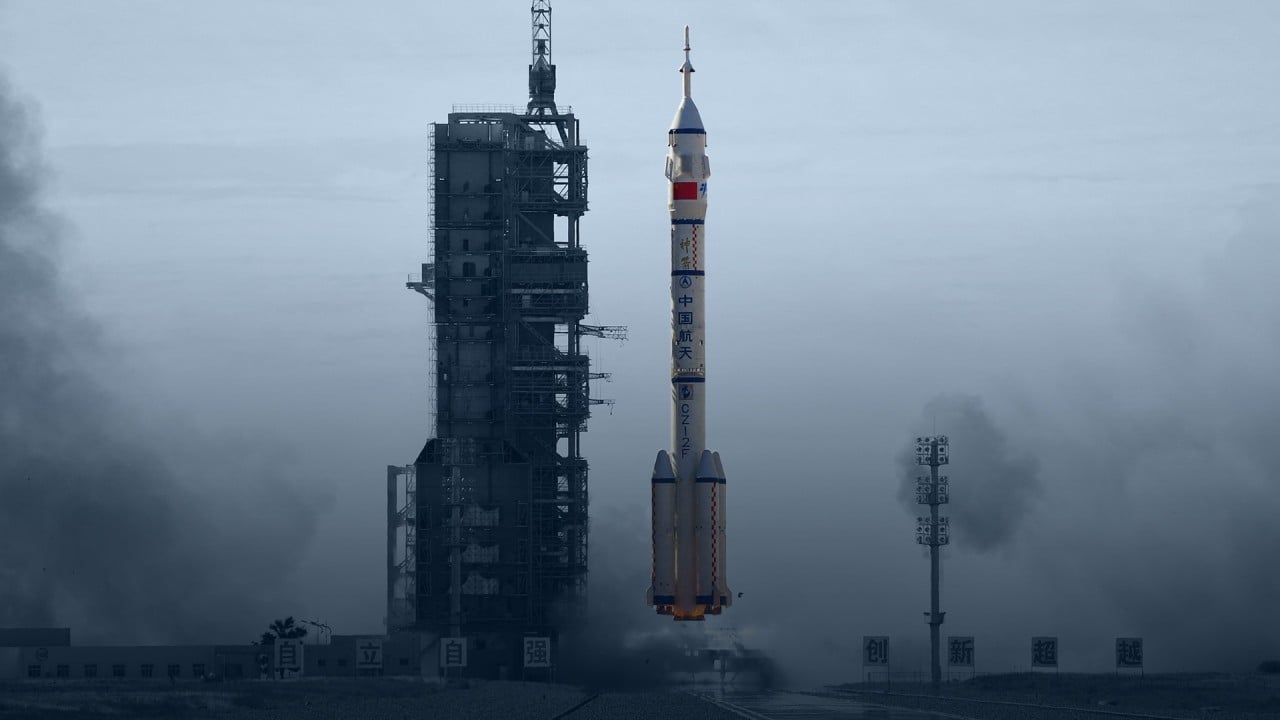
US weapon to jam Chinese and Russian satellites is running two years late
- The first portable Meadowlands systems from L3Harris Technologies were originally due last year, but are now expected in late 2024 because of technical issues
- The equipment features radar-like dishes mounted on wheeled trailers, and is intended to be transported and based at locations overseas
A portable US weapon that would temporarily jam Chinese and Russian communications satellites early in a conflict is running two years late for its first deliveries.
The first of a potential 30 of the Meadowlands systems produced by L3Harris Technologies Inc. was originally to be delivered in 2022 but now is expected by October 2024, according to US Space Force officials.
Problems encountered during testing “have been resolved, and the programme is moving into its final integration and test phases”, the Space Systems Command said in a statement. It said “the technical issues were due to unexpected challenges that required complex reworks of subassemblies”.
Charles Clarkson, L3Harris general manager for space superiority, said the company worked with the command to increase testing to ensure the jammer “will have more robust operational execution and reduced risk”.
Disclosure of the Meadowlands delay provides a rare glimpse into the highly classified world of US “counterspace” capabilities against Chinese and Russian satellites.
US military officials have been loath to discuss those capabilities even as they detail the array of offensive Chinese and Russian ground and space-based capabilities that they say would target US satellites in celestial combat.
Past debate over whether space “is a warfighting domain” was “answered by the US Congress when they created the Space Force”, Major General David Miller, the force’s director of operations, said this week during an Air Force Association symposium.
“We have to get about the process of providing capability to find, fix and deny any adversary’s capability to find and target US forces or allied forces.”
China says US spy satellites near its space assets a ‘threat to security’
In its annual threat assessment this year, the Office of the Director of National Intelligence said China has weapons intended to target US and allied satellites.
The new jamming system will not create space debris because it emits energy designed to cause temporary, “reversible” interference of communication satellites, officials said.
Meadowlands, estimated to be a US$219 million programme, is a lighter-weight version of the bulky “Counter Communications System” that was declared operational in early 2020. Meadowlands’ radar-like dishes mounted on wheeled trailers have two racks of equipment instead of the 14 on the earlier system, making it easier to deploy.
“The decreased footprint and increased capacity of Meadowlands will significantly improve its utility” over the Counter Communications System, said Charles Galbreath, senior resident fellow at the Air Force Association who has just completed a counterspace study sponsored by the Air Force Association.
China offers multiple potential targets for Meadlowlands, which is intended to be transported and based at locations overseas.
Of China’s more than 700 satellites, “about half of them are used for remote sensing and intelligence, surveillance and reconnaissance”, Major General Gregory Gagnon, Space Force’s deputy chief of Space Operations for Intelligence, told an Air Force Association symposium in March.
“Their on-orbit armada of satellites can track us, can sense us, can see us, can connect that data to their fires network and can now hold US forces at risk in a way we have never understood or had to face to date,” Gagnon said.



